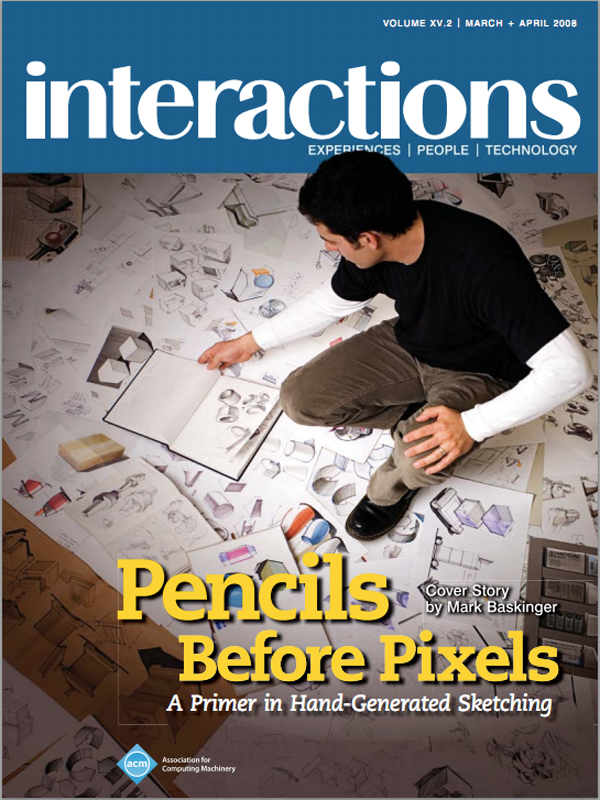Authors:
Hugh Dubberly, Shelley Evenson
The simplest way to describe the design process is to divide it into two phases: analysis and synthesis. Or preparation and inspiration. But those descriptions miss a crucial elementthe connection between the two, the active move from one state to another, the transition or transformation that is at the heart of designing. How do designers move from analysis to synthesis? From problem to solution? From current situation to preferred future? From research to concept? From constituent needs to proposed response? From context to form? How do designers bridge the gap? The bridge model illustrates one way of thinking about…
You must be a member of SIGCHI, a subscriber to ACM's Digital Library, or an interactions subscriber to read the full text of this article.
GET ACCESS
Join ACM SIGCHIIn addition to all of the professional benefits of being a SIGCHI member, members get full access to interactions online content and receive the print version of the magazine bimonthly.
Subscribe to the ACM Digital Library
Get access to all interactions content online and the entire archive of ACM publications dating back to 1954. (Please check with your institution to see if it already has a subscription.)
Subscribe to interactions
Get full access to interactions online content and receive the print version of the magazine bimonthly.







Post Comment
No Comments Found